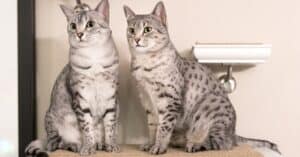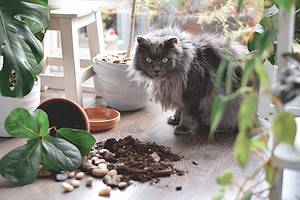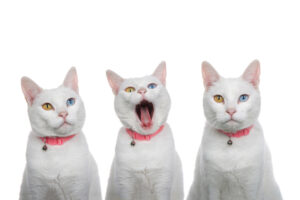The word polydactyl refers to a person or animal with more fingers or toes than usual. In the feline world, polydactyl cats have more than five toes on their front paws. This usually equates to just six, but it could be more. Less usual are those cats with more than four paws on their hind feet.
While these extra-toed kitties may look awesome, they’re really not so different from other cats. Of course, having extra toes does come with some fantastic benefits. In this article, you’ll learn ten amazing facts about these impressive polydactyl cats.
1. Polydactylism is a Congenital Deformity

This polydactyl kitty has two extra toes on their front paws.
©Averette at English Wikipedia/ CC BY 3.0 - License
Felines born with polydactylism have a genetic mutation. However, this mutation is neither harmful nor disabling. The condition is also known as hyperdactyly or hexadactyly, and it’s passed down through an autosomal dominant gene. In fact, if one cat parent is polydactyl, 40 to 50% of the resulting litter will most likely be polydactyl as well.
2. Maine Coons Have a Higher Occurrence of Polydactylism
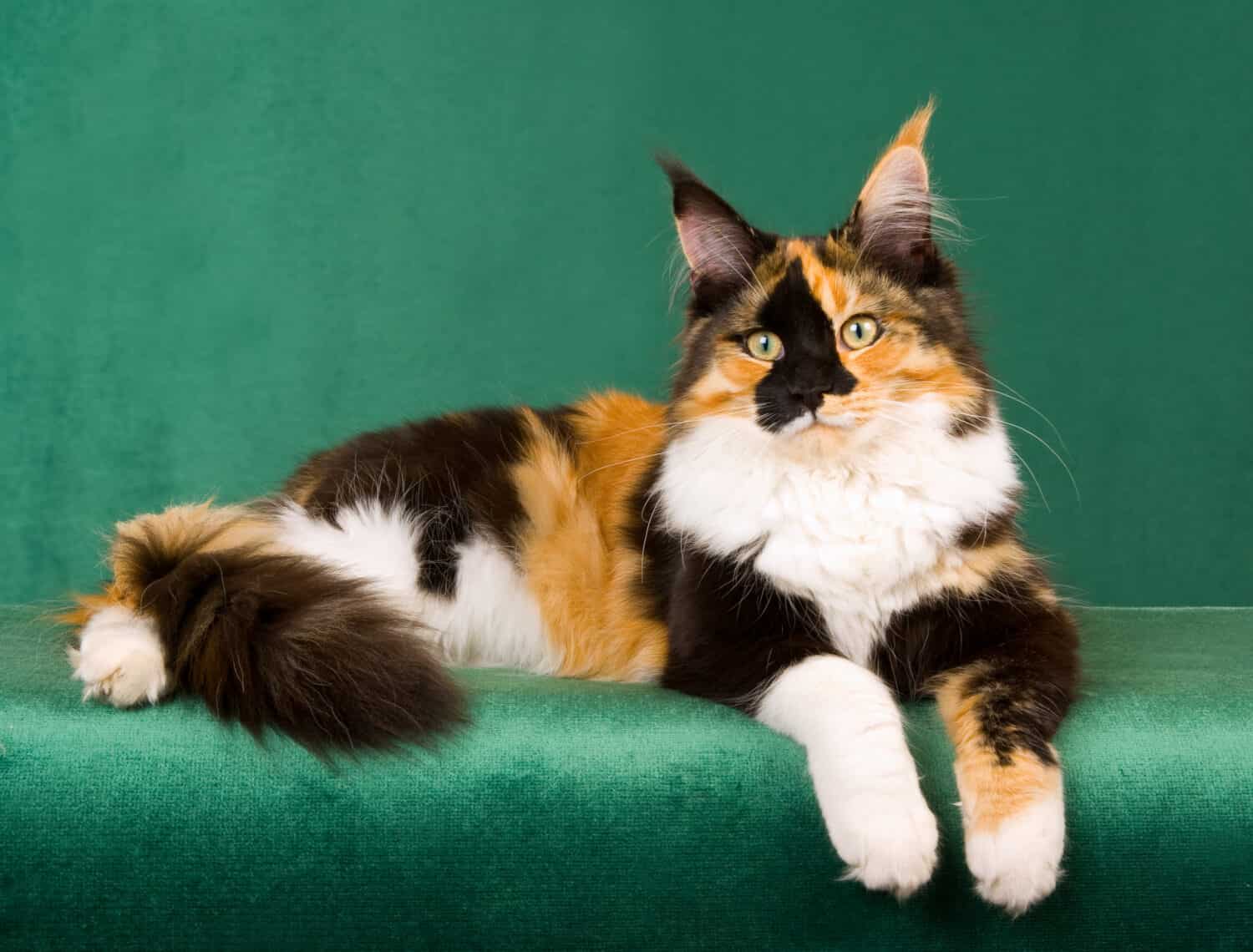
Polydactyly may be a natural evolutionary trait that helped this breed navigate the snowy Maine winters.
©Linn Currie/Shutterstock.com
Polydactylism can affect cats from any breed. However, Maine coons have a higher tendency to inherit this mutation. As many as 40% of early Maine coons were polydactyls, which some people claim helped them walk during snowy Maine winters.
3. Polydactyly May Bring Some Benefits
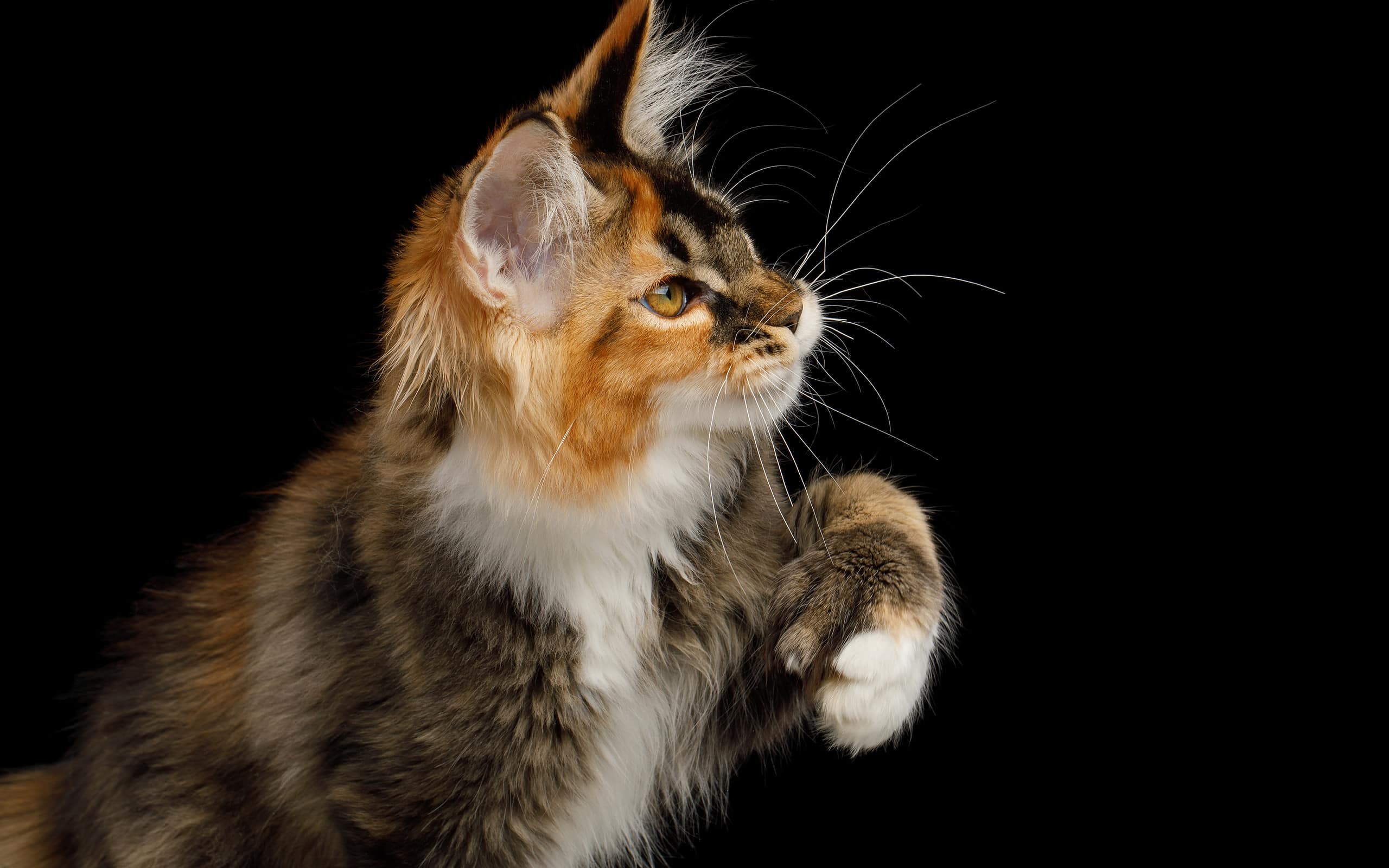
Those cute mitten paws may afford kitties some advantages over “normal” cats.
©Seregraff/iStock via Getty Images
Although polydactyl cat owners may need to use caution when trimming their pets’ extra nails, those extra toes can benefit the cat. Extra digits provide a more secure grip when climbing trees. They also help these cats maneuver on more demanding surfaces like snow or sand. One polydactyl cat named Cravendale from Warrington, England, used his extra digits to pick up the toys in his cat pen and then climb up the pen just like a human.
4. They Have Several Nicknames
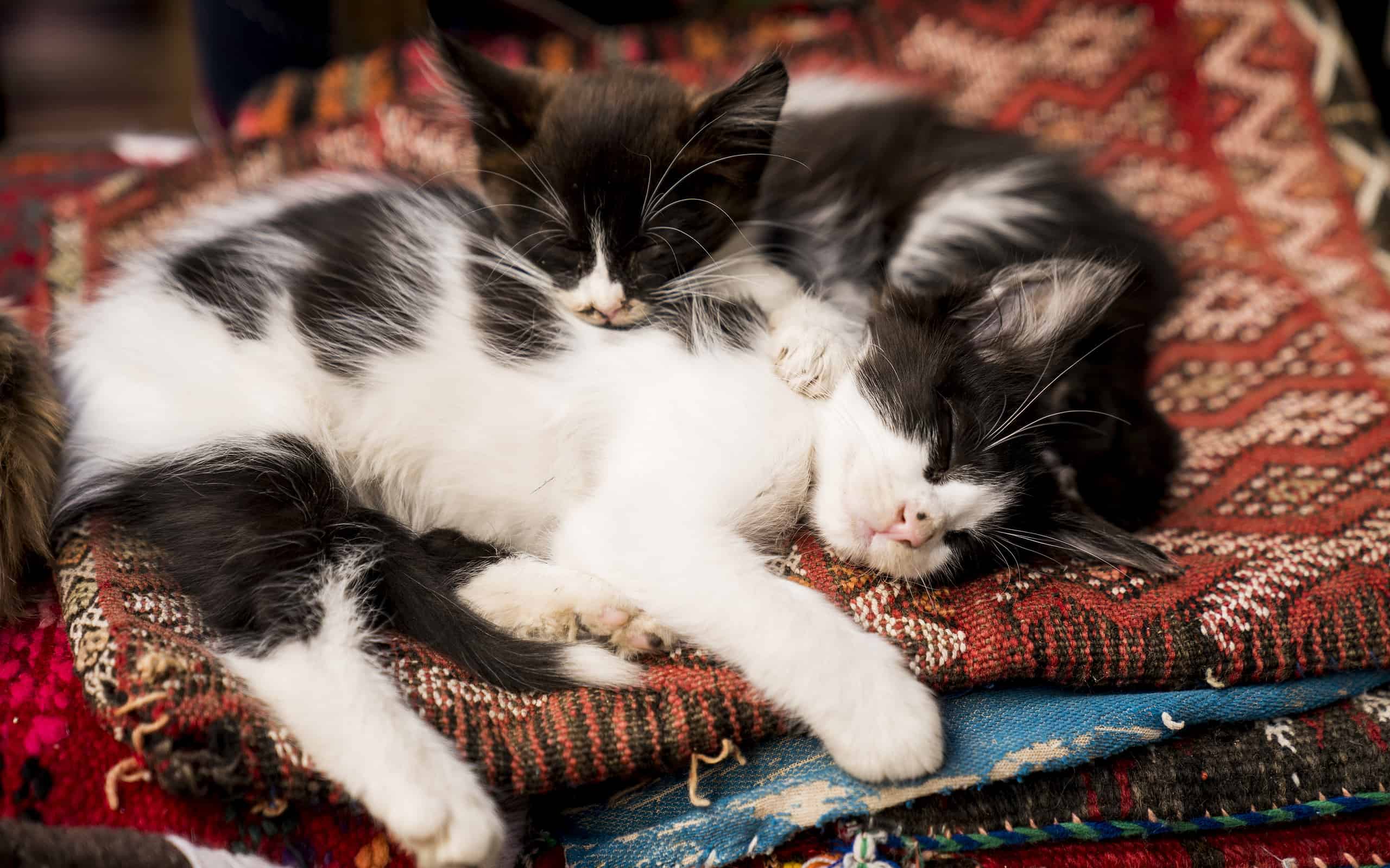
Cardi-cats are named after the Cardiganshire region of
Wales
, where they’re found in large concentrations.
©Cavan Images/iStock via Getty Images
Polydactyl cats often go by other nicknames. For instance, the IthaCat comes from a famous sewing pattern modeled after a late 1800s polydactyl cat named Caesar Grimalkin. Other nicknames include Hemingway cat, conch cat, boxing cat, snowshoe cat, and mitten-foot cat. Another name is Cardi-cat, named for the Cadiganshire region of England where these cats were common.
5. There Are Three Types of Polydactyly
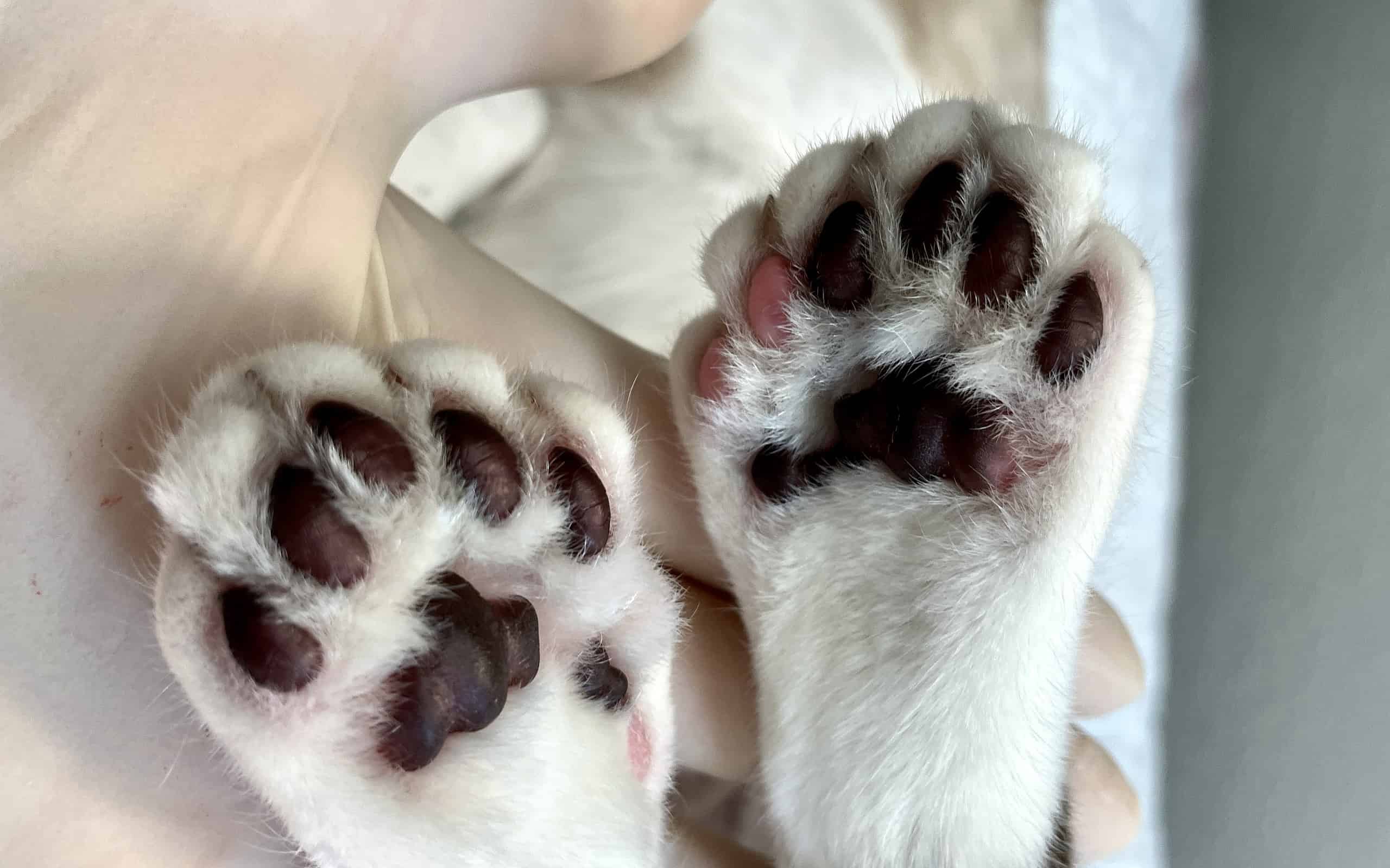
Most polydactyl cats have extra digits on their front paws. Only about 10% have more toes on their back paws than on the front paws.
©Karen Mueller/iStock via Getty Images
While all polydactyl cats have extra toes, there are three main types. Preaxial polydactyls have extra toes on the insides of thier paws. These thumb-like digits comprise the most common type of polydactylism. Another type is postaxials, which have extra toes on the outside of their paws. Finally, mesoaxials have extra toes in the middle of their paws. This is the least common type of polydactylism.
6. They Were Once Regarded as Good Luck Charms
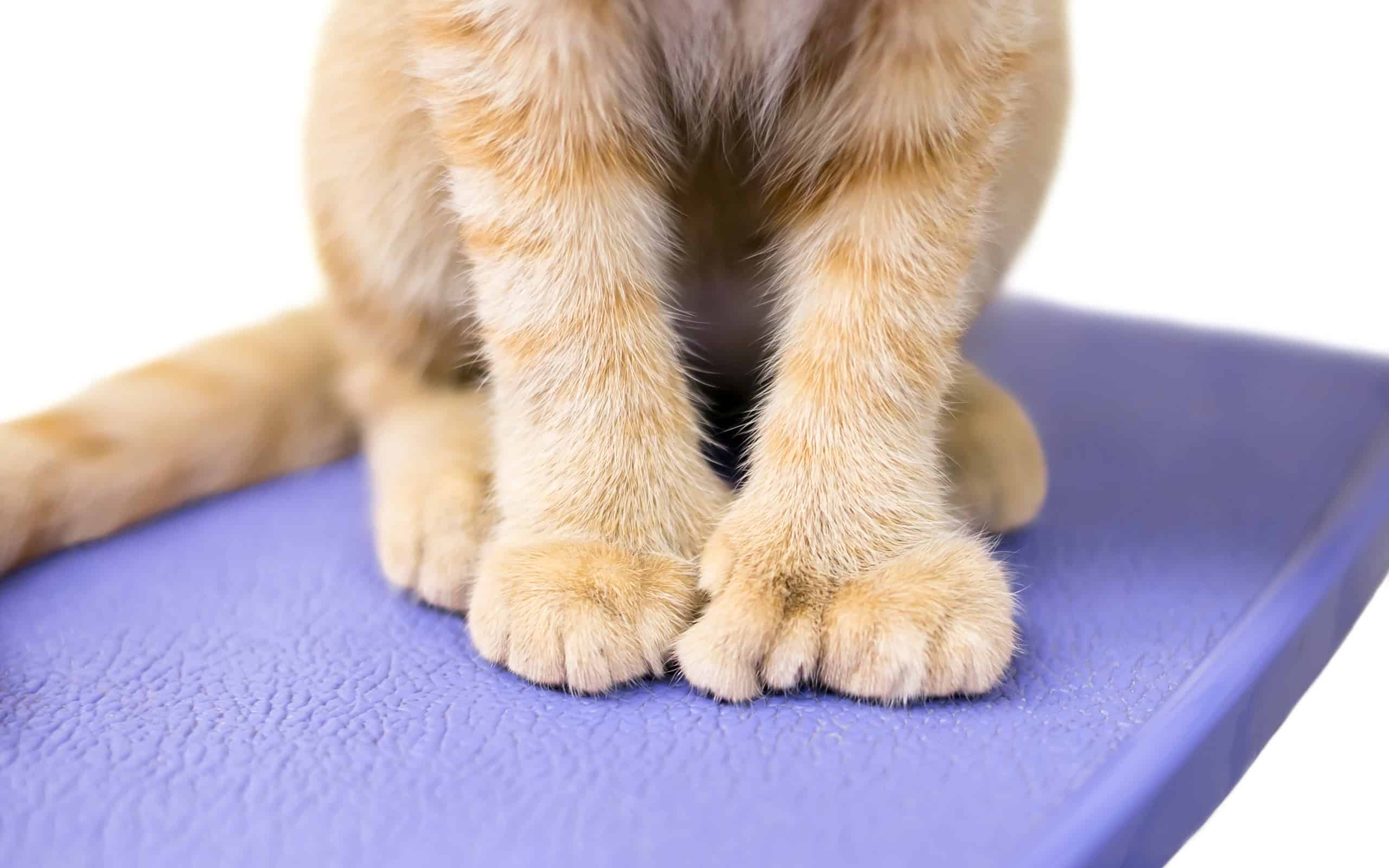
These cats have wider paws, which gave them better balance on the heaving and swaying ships they once sailed on.
©Mary Swift/iStock via Getty Images
Some experts believe that the Puritans brought these mitten-foot cats from England to the United States in the 1600s. They were believed to bring good luck to the families who took them in as pets. Sailors, especially, fancied them because they thought polydactyls were superior mousers and better able to balance on ships than other cats.
7. They Are More Common in Certain Regions
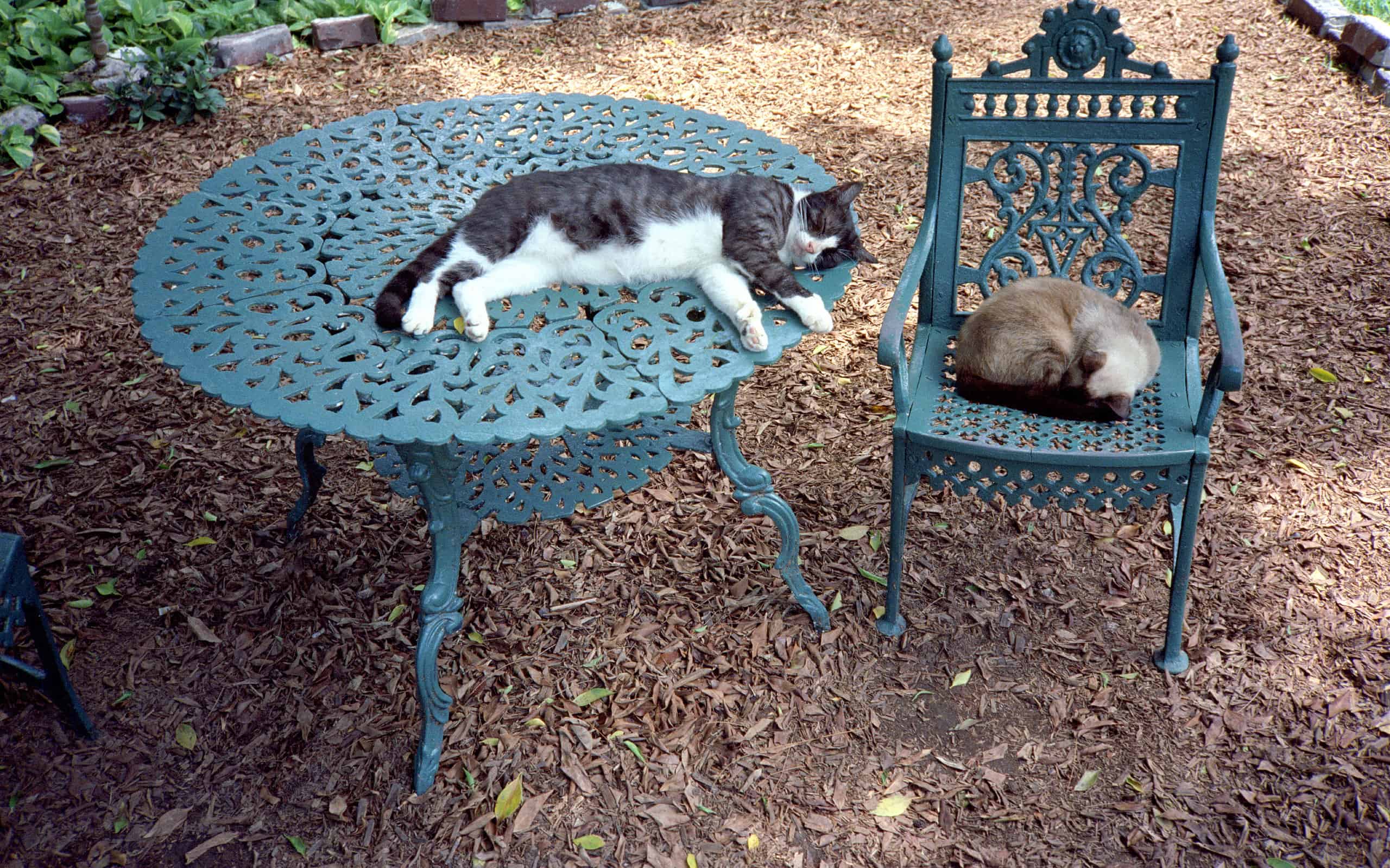
The Hemingway House in
Key West, FL
, is home to about 60 polydactyl cats.
©Richard Gunion/iStock via Getty Images
Polydactyl cats are found all over the world. Nevertheless, there are some regions where they are most common. There are larger populations on the East Coast in the U.S. as well as in South West England and in Wales. These concentrations may be due to Puritans bringing polydactyls from England to the United States. In addition, sailors often took them when sailing into and out of these coastal towns.
Ernest Hemingway kept a colony of these extra-toed kitties while living in Florida. Moreover, about 60 of his cats’ descendants still live at the Hemingway House in Key West.
8. The American Polydactyl Has Become a Breed
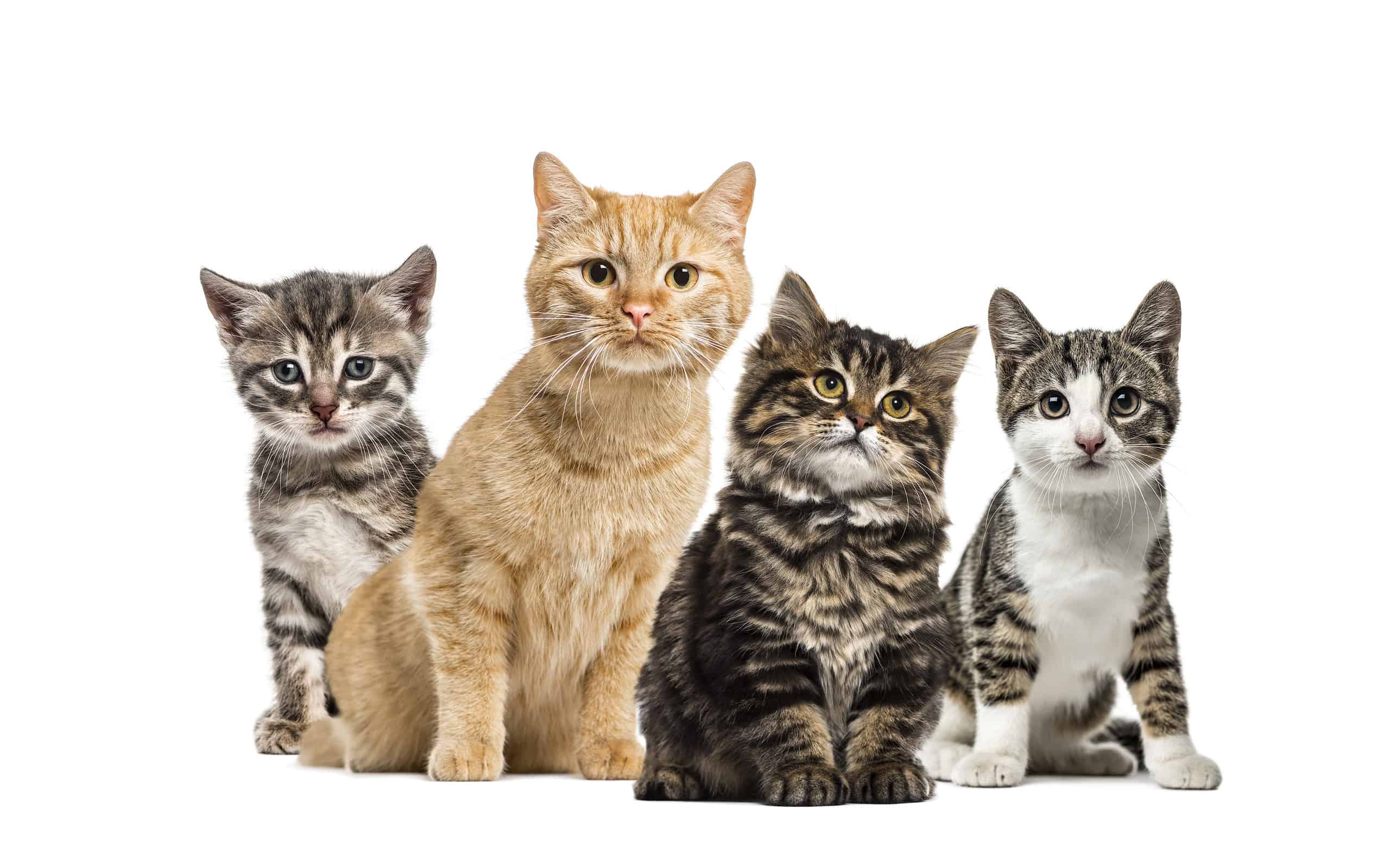
Polydactyly occurs in all breeds. However, the American polydactyl has become its own distinct — if not universally recognized — breed.
©GlobalP/iStock via Getty Images
Polydactyly is more common among cats than people may think. In fact, it’s prevalent enough that Americans have developed a full breed of polydactyls. American polydactyls, along with the Maine coon variety, aren’t recognized universally as breeds. Yet, some people breed them specifically for their extra toes and other charming characteristics.
9. There Was a Polydactyl Cat in the White House
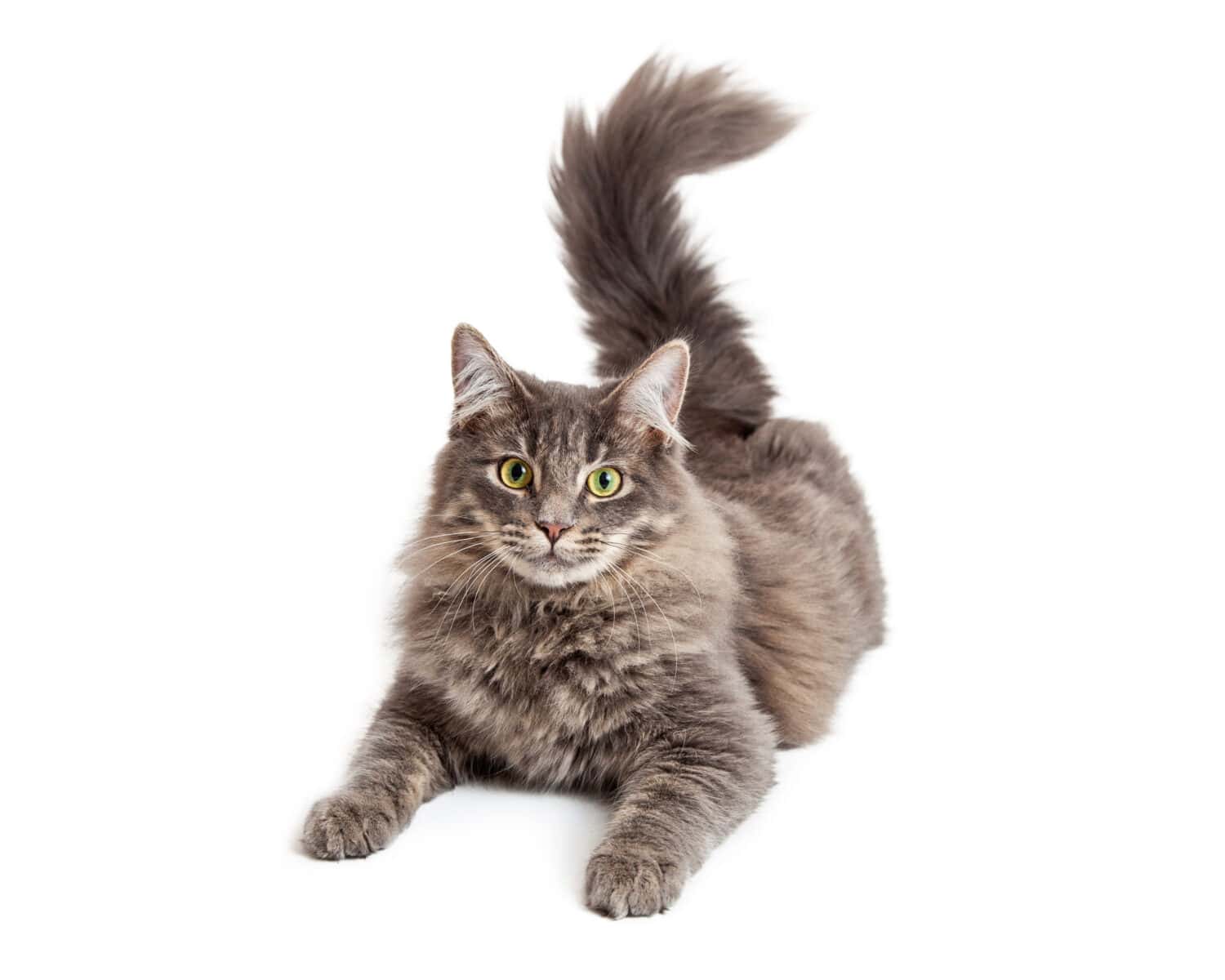
During his presidency, Theodore Roosevelt doted on his polydactyl cat, Slippers, and often allowed him in the dining room during important formal dinners.
©GoodFocused/Shutterstock.com
Theodore Roosevelt had various interesting animals throughout his life. During his presidency, he had several pets in the White House, including a polydactyl cat named Slippers. According to historians, Slippers was quite a bold cat, often inviting himself to White House dinners or posting himself in the middle of hallways during dignitaries’ visits.
10. Two Polydactyl Cats Made it Into the Guinness Book of World Record
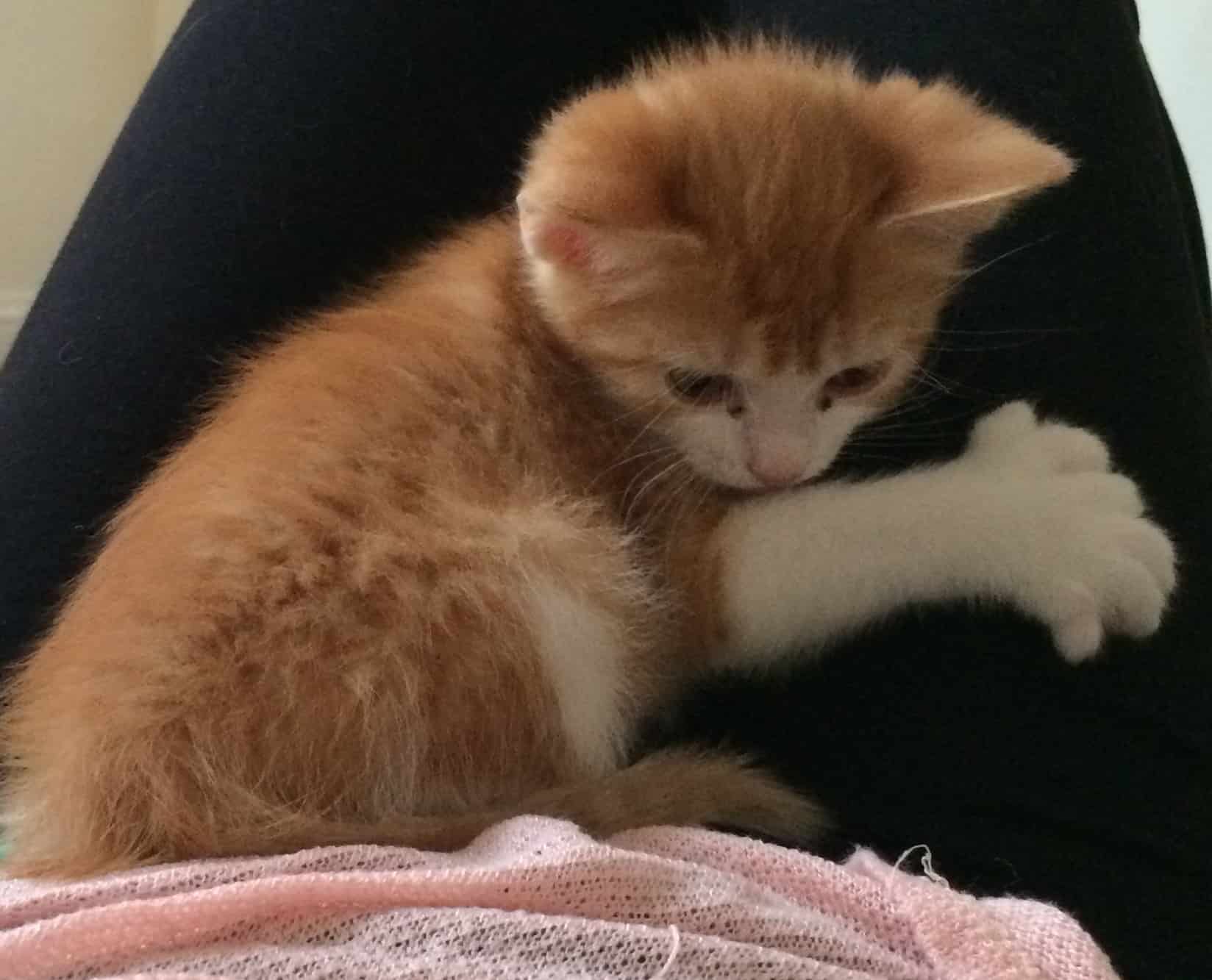
Most polydactyls have 6 toes on their front paws. However, some have more than that.
©Jamesishere/ CC BY-SA 3.0 - License
Most cats have a total of 18 toes — five on each front paw and four on the back paws. However, polydactyls often have 20 toes. Sometimes they have even more. Jake was a red tabby from Ontario, Canada, with seven toes on each of his paws, totaling 28 in all. He was listed in the Guinness Book of World Records in 2002. He was later joined in this honor by a Minnesota tabby named Paws, who also boasted 28 toes.
Summary of Polydactyl Cat Facts
| Number | Fact |
|---|---|
| 1. | Polydactylism is a congenital deformity. |
| 2. | Maine coons have a higher occurrence of polydactylism than other breeds. |
| 3. | Polydactyl cats have some benefits over other cats. |
| 4. | There are several nicknames for polydactyls. |
| 5. | There are three types of polydactylism. |
| 6. | They were once regarded as good luck charms. |
| 7. | Polydactyl cats are more common in certain regions. |
| 8. | American Polydactyls, along with the Maine coon variety, are full breeds. |
| 9. | There was once a polydactyl cat in the White House. |
| 10. | Two polydactyl cats made it into the Guinness Book of World Records for having 28 toes. |
The photo featured at the top of this post is © Ed-Ni-Photo/iStock via Getty Images
Thank you for reading! Have some feedback for us? Contact the AZ Animals editorial team.




